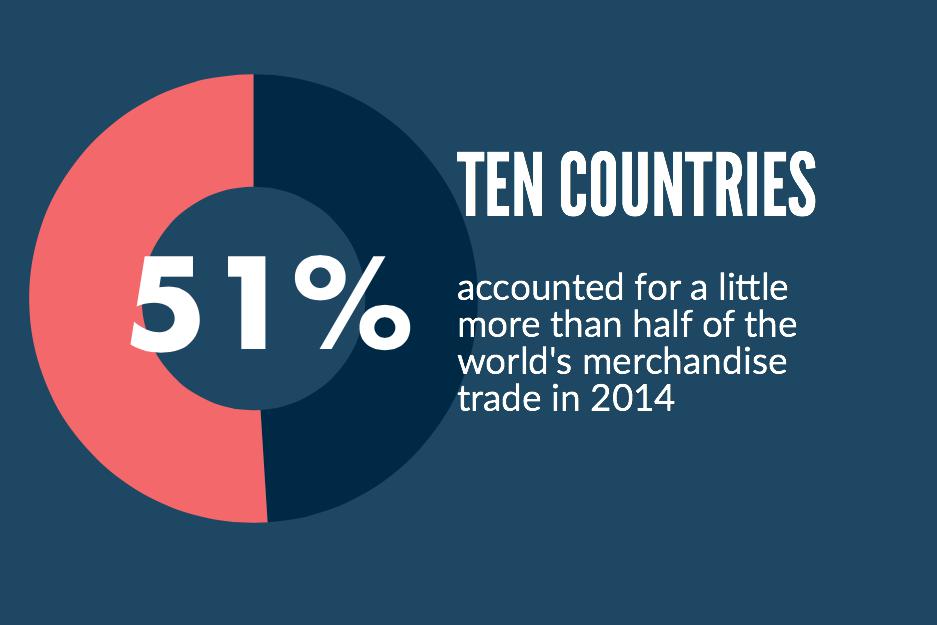Information Technology Agreement 2.0
A Much Needed Upgrade
The WTO Information Technology Agreement (ITA), which removes tariffs on information and communication technologies (ICTs), got an overdue upgrade last year when 24 participants representing 53 WTO members agreed to nearly double the products included in the agreement.
The original ITA launched in 1997 and was a boon to global trade in ITCs, which grew from $1.2 trillion before the agreement to more than $5 trillion today.
But the original list of products covered under the ITA – about 250 products mainly intended for business and professional use – could not keep pace with technological innovation. Many common consumer electronic products such as DVD players and printer ink cartridges didn’t even make the first cut in 1997.
Since then, myriad new products have been invented and creative engineers and scientists continually think up new applications for existing technologies.
Fast-Changing Landscape of Inventions and Applications
ICTs enable processes that make our lives easier, like checking in for flights using our phones or kiosks. They also drive competitive edge. Advanced manufacturing is a frontier constantly evolving thanks to a conveyor belt of innovations such as new-generation semi-conductors. Combine harvesters can navigate themselves with GPS, collect precise data on yields per acre, determine soil health, and deliver just the right amount of fertilizer to reduce cost and impact to the environment.
Medical products get smarter by the day, ranging from continuous glucose monitors and insulin pumps that automate blood sugar management, to powerful diagnostics like magnetic resonance imaging known as MRIs. Miniaturization of ICT components and integration with everyday devices may enable health providers one day to conduct ultrasounds on smart phones. Inventions such as this would unlock access to healthcare in rural and remote areas.
Many products formerly used primarily for business are now common for personal use. And products that served one primary purpose, like watches, now function as phones and cameras. ICTs are ubiquitous in daily life and confer competitive advantages throughout the entire value chain from R&D to manufacturing to supply chain management and service delivery.
Who benefits?
The expanded coverage of ITA potentially offers some $50 billion in tariff savings globally each year. The Information Technology and Innovation Foundation (ITIF) estimates the ITA will increase the size of the global ICT marketplace, adding $190 billion annually.
As for the United States, ITIF estimates the expanded ITA could generate $2.8 billion in US exports, boosting revenues of American ICT firms by $10 billion, and supporting approximately 60,000 new jobs.
ICTs are critical infrastructure for all facets of development, from healthcare to education to economic opportunity. In the first twelve years of the original ITA, developing country exports of ICTs increased almost 34 percent. IT-intensive firms are 25-30 percent more likely to grow employment. According to the OECD, the probability of innovation in a firm increases with the intensity of ICT use in manufacturing and service firms alike. Acquiring ICTs at less cost produces benefits that accrue widely across the economy.
Not all WTO Members have joined, but the 53 Members who signed up for expanded coverage represent 90 percent of world trade in the new products covered, reducing costs for everyone. And the commitments made to eliminate duties will extend to all 164 WTO members whether they made commitments or not. For developing and least-developed countries that rely on imports of ICTs, joining the ITA could expand access in their countries to life-saving and life-enhancing technologies, hasten their adoption and drive domestic productivity and economic growth.
What Next?
18 of the 24 participants in the expanded ITA implemented the agreement as of November 1. Of particular note, China submitted its commitments to the WTO on October 26, 2016, which should provide significant encouragement to the remaining members to bring the agreement into full implementation soon.
Read More:
Andrea Durkin is the Editor-in-Chief of TradeVistas and Founder of Sparkplug, LLC. Ms. Durkin previously served as a U.S. Government trade negotiator and has proudly taught international trade policy and negotiations for the last fifteen years as an Adjunct Professor at Georgetown University’s Master of Science in Foreign Service program.






